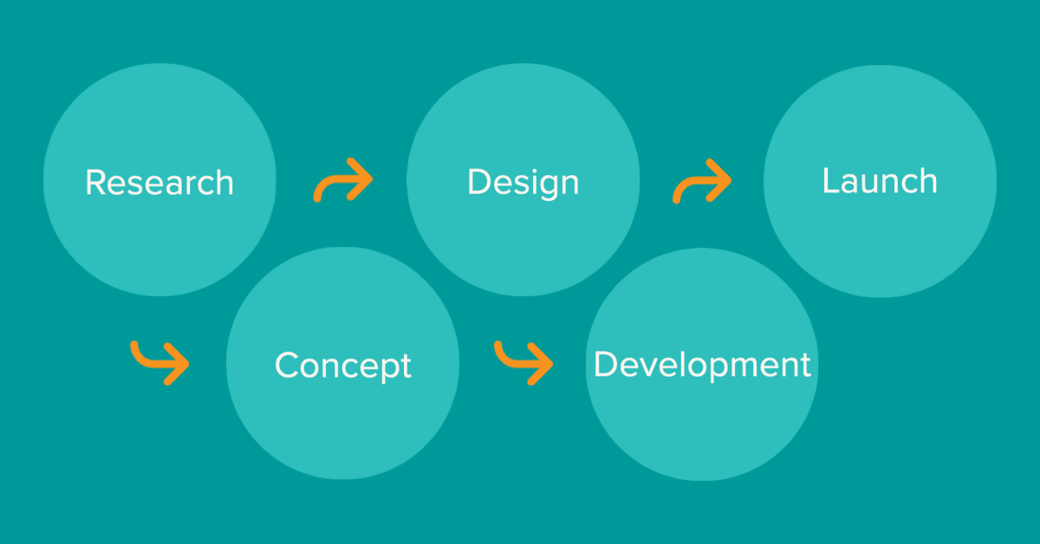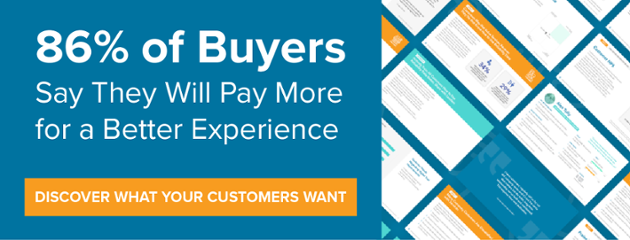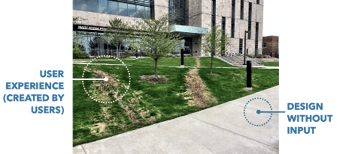Insights
5 Stages of User-Centric Design Thinking
What is user-centric design thinking?
Imagine trying to solve problems focusing on understanding people and their needs. That’s the basis of user-centric design thinking or UCD.
UCD requires recognizing and learning about your users—the people using your product or interacting with your service now and in the future. The better you understand your users and their needs, the better you can design solutions fitting for them.
User-centered design thinking builds the foundation for any kind of product or service design. If your layout is clear, simple, and in line with your users’ needs and expectations, you save time and money spent resolving service delivery problems. The fundamental principle of user-centric design thinking is understanding users’ needs to design the best products and services. This is where we can help.
What are the five stages of user-centric design thinking?
- Research – usually contextual inquiry or interviews
- Concept – ideating concept prototypes to design and test
- Design – initially medium-fidelity, but increasing fidelity through iterations
- Development – building the de-risked design
- Launch – utilizing the developed product
1. Research phase
The basis of user-centric design is research. A team of designers uses many research strategies to understand the scope of the problem, the nuances of the task or tasks, and the user’s needs and goals.
The goal of research is to understand the problem and empathize with the user. Only by empathizing with the user can the designer create a solution to meet their needs.
2. Concept phase
User-centric design thinking favors prototyping. When the design team comes up with a prototype concept, you can give valuable feedback and information to guide the research direction.
The goal of this step is to test ideas with the target user to understand their needs better. This step involves many repetitions and focuses on refining the design.
3. Design phase
Prototypes are created at a higher complexity level to refine the design to meet the user’s needs.
For designers and the design team, this rehearsal is crucial because it provides information about how well the design meets the user's needs and the project brief. Depending on the complexity, the slightest changes can make or break the success of the model.
4. Development phase
This step involves the implementation of a well-defined and researched solution. It is a culmination of the careful and detailed data collection to evaluate how successful the prototype has become.
This type of testing focuses on usability and assessment of the design against the design constraints. Based on the evaluation, further iterations and adjustments may be necessary.
5. Launch phase
The product is launched or "officially introduced" to the targeted user group and is no longer a prototype.
Yet, even after launch, the user-centric design thinking includes continuous monitoring and evaluations. As a larger group of users start to use the model, new or unforeseen needs or challenges may emerge, and further changes or adjustments should be made.
This step’s goal isn’t to launch a product as a final presentation of the solution but as another step in the user design thinking process.
Why are the three lenses of human-centered design necessary?
The three lenses of user-centric or human-centered design are desirability, feasibility, and viability. The challenge is balancing what is desirable from a human perspective with what is technologically feasible and economically viable. One of the fundamental principles of user-centric design thinking is not always giving people what they want. It’s about designing products with the user’s needs at the heart of our process. The ideas and solutions born of this process should balance desirability, feasibility, and viability.
UX (user experience) designers consider all angles
UX designers have a tremendous responsibility to consider the “why, what, and how” of a product’s use. The “why” involves the user’s rationalization for using a product, whether it’s linked to a task they wish to perform or to values and views they associate with the ownership and use of the product. The “what” determines the actions or functions an individual can complete with the product. The “how” relates to the design of functionality in an accessible and aesthetically pleasant way. UX designers use these three steps to design products for users to create meaningful experiences.
Why is investing in user design thinking valuable?
By putting users at the forefront of the design process, you can build the foundation needed for a successful product or service. UCD is an invaluable way of allowing your users to tell you what works and what doesn’t. They can highlight both positive and negative areas in the usability and accessibility of their experience.
Advantages of user-centric design thinking:
- With close user involvement and interaction, products are more likely to meet user’s expectations and requirements—promoting increased sales and lower manufacturing costs.
- Designers can tailor their products to specific contexts or tasks to create a safer product design and reduce human error.
- With regular contact with users, designers can develop a more profound sense of empathy and create ethical designs to respect privacy and life quality.
- Since designers face the diversity of cultures and different types of people using their products, there is a greater emphasis on creating sustainable businesses.
Implementing user-centric design thinking
When using the user-centric design thinking process for a project, base your project upon an explicit understanding of the user’s tasks and environments to capture and address the complete user experience. As you roll out testing, include users from across multiple disciplines, domain experts, stakeholders, and the users themselves. Then and only then can you be assured accurate results.
Implementing user-centric design thinking into a project can be difficult on your own. If you’re ready to start the process, contact our team today, and we can help you build the foundation needed for a successful product or service.




